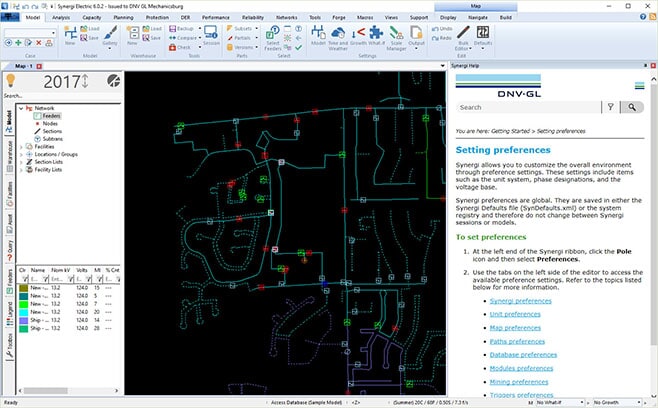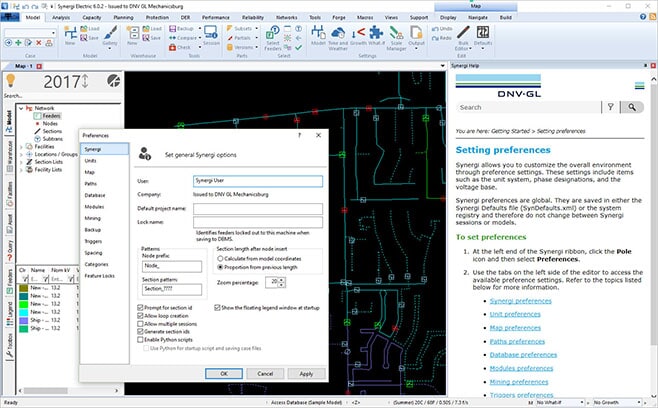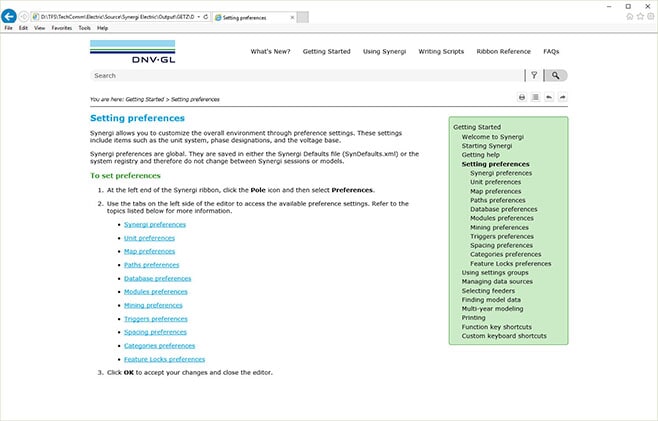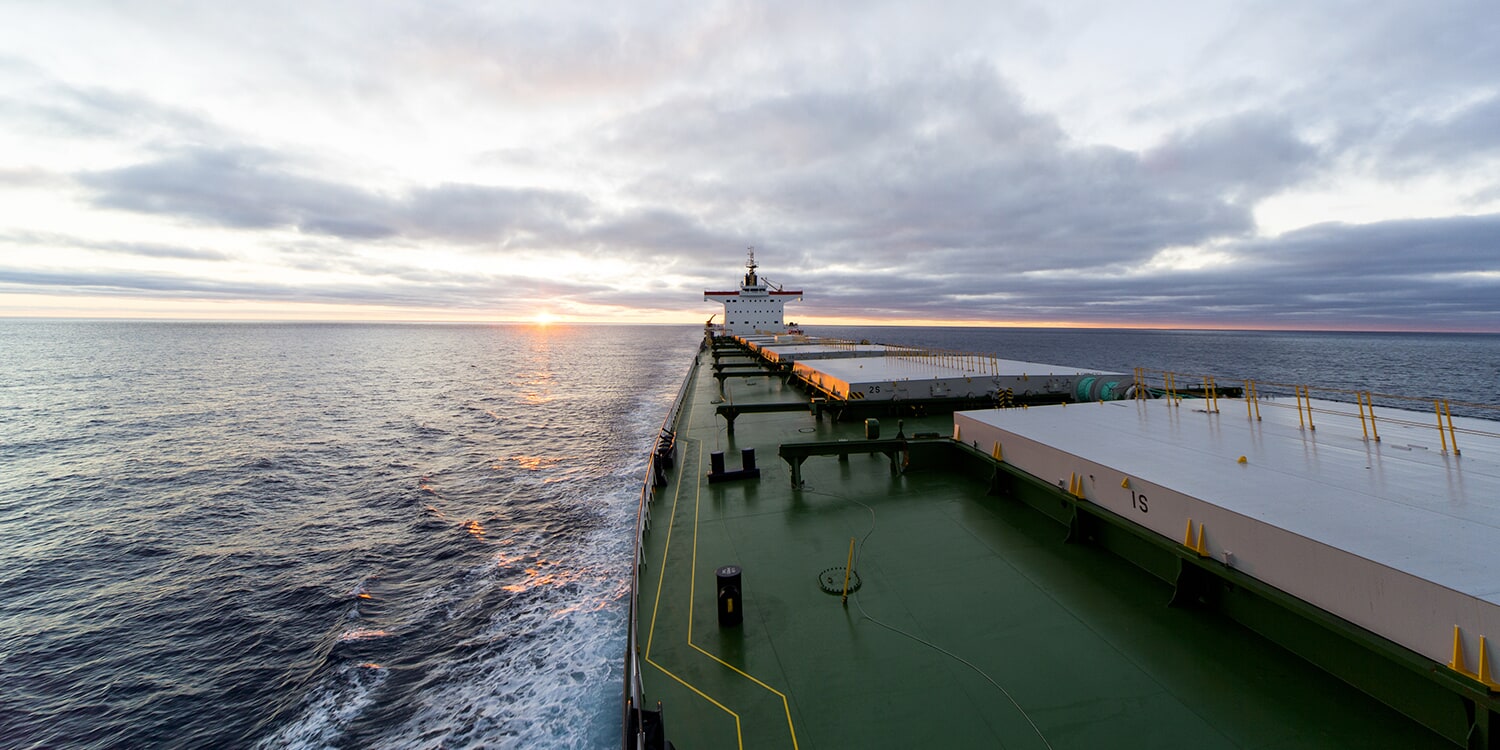Customer Success Story
DNV GL Lays the Groundwork for Modern Documentation
Goals
- Import Adobe® FrameMaker® content into a modern authoring and content management solution.
- Modernize documentation for print and online formats.
- Create user-friendly online Help and documentation for internal and external users.
- Streamline development and delivery of guides and manuals through single-source publishing and topic-based authoring.
Benefits
- Easy Customization: DNV GL used templates, conditions, and structured topics to customize content and maintain the brand consistency of its documentation.
- Increased Efficiency: DNV GL transformed user guides and manuals of 2000-plus pages into targeted, manageable content. Use of conditional text reduced production time on multiple outputs.
- Improved User Experience: Through TOC and dropdown features in MadCap Flare DNV GL simplified the user’s ability to access the information they need.
- Enhanced Team Collaboration: Integration of MadCap Flare with TFS enables DNV GL to maintain version control with multiple stakeholders and improve content creation and delivery.
MadCap Software Solutions and Services:
Global Provider of Advisory and Certification Services for Maritime, Oil & Gas, Energy Industries Streamlines Content Delivery with MadCap Flare
DNV GL is a global provider of software for a safer, smarter and greener future in the energy, process and maritime industries. Its solutions support a wide variety of business critical activities, such as design and engineering, risk assessment, asset integrity and optimization, and ship management. With multiple software products and services to support these efforts, and employees in more than 100 countries worldwide, efficient internal and external communication are a key priority for DNV GL.
Ensuring that documentation is delivered to employees and customers in a timely matter is no small effort. Gary Etzel, technical communications manager, plays an integral role at DNV GL, heading a team of technical writers responsible for producing documentation for a major line of software products for customers in the natural gas, water, and electric utility industries. Not only is the team responsible for producing and managing documentation for these users, they’re also responsible for meeting the needs of an organization with offices all over the world. Today they rely on MadCap Flare’s powerful topic-based authoring and single-sourcing capabilities to create HTML5 online help systems and PDF user guides, streamline workflows, and modernize their entire documentation process.


Embedded Help window within Synergi Electric, in HTML5 TopNav format
Rethinking the Documentation Workflow
For years the team used Adobe® FrameMaker® to manage the documentation workflow, producing PDF and CHM files for DNV GL’s various product guides and online Help. As time went on, however, the limitations of the process began to hinder their ability to produce content quickly and efficiently. Not only were they managing and updating increasingly complicated files, but their content development process was unable to scale with the company’s software demands, and infrequent FrameMaker® updates meant their workflow lacked the functionality they needed.
“It was a complicated process that was starting to become too cumbersome,” recalled Etzel. “Our documentation was quickly growing, but the process set up with FrameMaker® was harder and harder to maintain.” Eventually, Etzel and his team began to search for an alternate solution that would meet the company’s authoring and publishing requirements.
It was very easy for us to get from a MadCap template to something that looks and feels like a DNV GL-branded website.
Gary Etzel Technical Communications Manager, DNV GL
Discovering Modern Documentation
To find the right solution, the team identified several requirements to help narrow their decision. They were looking for a solution that could import their existing FrameMaker® content, allow them to manage content from a single source, and publish it in a variety of outputs, including print and online formats.
During the search for a new technical authoring solution, Etzel came across a webinar hosted by MadCap Software that caught his eye, titled “Goodbye Tripane, Hello Frameless Top Navigation Web Output.” The webinar introduced the Top Navigation output in MadCap Flare and demonstrated how users could convert their older “tripane” online Help format (a design commonly used for online Help sites since the 90s) to a new “frameless” website with a search bar and main menu navigation at the top of the page. The new HTML5-based format better matched corporate websites and modern web design principles. It also enabled search engines, such as Google, to crawl the page content and reveal pages in organic searches.
“It was like the light went off,” Etzel remembered. “This was the solution we were looking for.”
Not only did MadCap Flare meet all of the team’s primary requirements, it also presented the opportunity to modernize the documentation’s look and feel, while maintaining the DNV GL brand. With dozens of out-of-the-box templates, MadCap Flare provided the ability to match the team’s outputs to the look and feel of their brand.
“It was very easy for us to get from a MadCap template to something that looks and feels like a DNV GL-branded website,” said Etzel. “We were very happy about being able to do that quickly.” Within the couple of months of the initial demo, the team was ready to move forward with MadCap Flare.

Responsive HTML5-based Topic page, created with MadCap Flare
Rethinking Content Development
Today, MadCap Flare is enabling the team to lay the groundwork for more modern, flexible documentation. A departure from previous efforts to scale documentation for more formats and outputs, MadCap Flare has provided DNV GL with a range of features designed to make authoring easier and more efficient than ever.
Oftentimes, the team is tasked with writing unique content for different audiences and industries, while maintaining content regarding software use in user guides and manuals. Conditional text has been a major asset, allowing the team to include or exclude text within the content, as well as collaborate with each other through author comments. Since integrating conditional text, the workflow has been greatly simplified.
“Back with FrameMaker®, we used structure-based conditions, which lacked a lot of the flexibility we needed,” recalled Etzel. “Conditional text has always been a requirement for our process, and MadCap Flare has greatly enhanced the way we write and publish content.”
The team also plans to take advantage of snippets to facilitate the use of common definitions throughout DNV GL’s software products. “We have definitions in many areas of the documentation to explain to users what data they need to provide,” explained Etzel. “We want to just write it once and use it multiple times, so we’ll use snippets for that.”
We’ve been able to reduce our documentation from a chapter-based organization, with 30 or more chapters in some guides, to a topic-based organization, with only 4 or 5 top-level topics and a logical structure that is easy for users to navigate. Now users are able to look at the table of contents and find exactly what they need.
Gary Etzel Technical Communications Manager, DNV GL
Managing Content with Topic-Based Authoring
The topic-based authoring approach in Flare allows Etzel to better manage DNV GL’s content, saving both time and effort for the team, he noted: “We had user guides that were over 2,000 pages, resulting in massive PDF documents and online Help systems. We definitely wanted to be able to streamline our content as much as we could. With Flare, we are able to take those large user guides and split them into smaller, manageable documents.”
The table of contents (TOC) features in Flare have allowed the team to effectively display information, giving users the ability to drill down to relevant topics quickly. The team makes heavy use of TOCs in the content, with a master TOC linking to several sub-TOCs. Within these sub-TOCs, the team uses conditional tags to easily customize content for all of the publishing channels.
“I’m a big fan of how the TOCs work in Flare,” said Etzel. “It lets us organize content in a more logical, user-friendly manner.”
Integrating drop-down text has also proven to be a major asset in the DNV GL team’s documentation efforts. With the reduced amount of text on a given page, content is now more accessible to the user.
“We’ve been able to reduce our documentation from a chapter-based organization, with 30 or more chapters in some guides, to a topic-based organization, with only 4 or 5 top-level topics and a logical structure that is easy for users to navigate. Drop-downs have also replaced a lot of lengthy tables and procedures that we had in the old system. Now users are able to look at the table of contents and find exactly what they need.”

Online Help Portal for DNV GL Synergi Electric
Utilizing Resources to Enhance Documentation
MadCap Flare’s rich feature set and flexibility help the team constantly discover new ways to enhance DNV GL’s documentation. To aid in this endeavor, they’ve found the resources available from MadCap Software to be particularly valuable. Through free industry webinars, certified training courses, or the annual MadWorld user conference, Etzel and his team rarely miss an opportunity to expand their knowledge of MadCap Flare and industry best practices.
“When my team finished the online training course, they came out with a lot of great ideas,” said Etzel. “How snippets are used, dropdowns, and thumbnail images—we saw all these features of Flare and thought, we can definitely make use of this in our documentation.”
Oftentimes, when a key concept emerged from the MadCap resources, the team would quickly implement the idea to their advantage. During the transition to Flare, a key concern was maintaining version control, since the team’s writers are spread out in different offices and often work on the same project at the same time. But after one of the team’s writers attended the training course, she was able to come out with actionable takeaways to solve the problem by taking advantage of MadCap Flare’s ability to integrate with Microsoft® Team Foundation Server® (TFS).
“The solution was right there in front of us. Within 24 hours, she had our projects bound in TFS, giving us the ability to check in and out of the project,” Etzel said. “We now have the benefit of multiple writers working on the same project, all from an idea learned during training.”
We’re setting up our documentation for the future of our software products. With all the features in MadCap Flare, it’s easier than ever to produce clean, modern documentation.
Gary Etzel Technical Communications Manager, DNV GL
Looking Forward with Renewed Energy
A major benefit DNV GL has seen in migrating to MadCap Flare is the renewed sense of energy across the team, Etzel observed: “My team was hired into an existing process that was already showing its age. And now that they’ve left a complicated workflow in favor for a straight-forward, clean approach, they’re very excited.”
As DNV GL moves toward a web-based, modern approach, the team looks forward to the future of integrating the company’s online Help and software products into a single cohesive, top navigation portal.
“We’re setting up our documentation for the future of our software products,” Etzel explained. “We’re excited to take advantage of the features and HTML5 outputs, so customers can view our content on tablets, mobile devices, and desktops. And with all the features in MadCap Flare, such as conditional text, snippets, and dropdowns, it’s easier than ever to produce clean, modern documentation.”
Etzel added, “I’m glad we went down this path, as it’s become a process that our department has adopted together. We’re really excited to see how our documentation grows as we move forward.”





